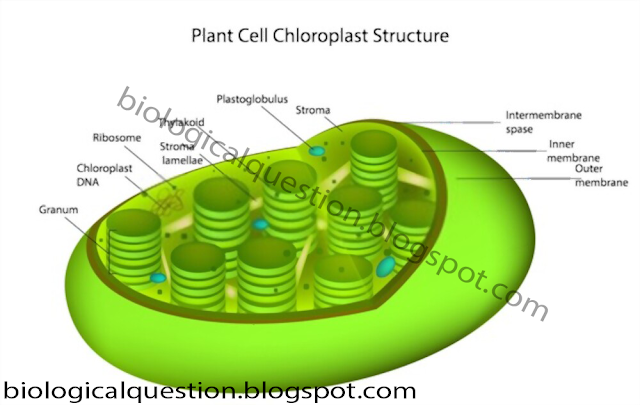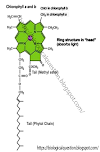FIRST YEAR BIOLOGY
NOTES
FEDERAL BOARD
CHAPTER : NO : 1
CELL STRUCTURE AND FUNCTION
Following functions will not operate if no lysosomes are present in human cells.
Intra-cellular digestion/phagocytosis: It is the most important function of lysosomes. They contain those enzymes that can digest the phagocytosed food. Any foreign particle that enters the cell is immediately phagocytosed by lysosomes into simple digestible pieces.
Autophagy is another fundamental property of lysosomes in which cell eats its own unwanted structures according to the need (self-eating of cell). In this process, the old and worn out parts of the cell are digested and thus recycling of the cellular materials takes place and the cell can be renewed. Their enzyme also helps in degeneration of the cell (Development of pad like hand into fingers and tail degeneration in man, A human liver cell recycles half of its macromolecules each week, excess of mitochondria are digested by lysosomes).
Extra-cellular digestion/exocytosis: Certain lysosomal enzymes are involved in extra cellular digestion by releasing enzymes outside of the cell by exocytosis e.g. replacement of cartilage by bone during development.
Autolysis in the self-digestion of a cell by releasing the contents of lysosomes within the cell. In such circumstances lysosomes have been named as suicidal bags (that's why lysosomes are sometimes referred to as the self-destruct system of the cell). Autolysis is a normal event in some differential process and may occur throughout a tissue. e.g. Autolysis also occurs in muscles, which are not exercised.
Sometimes
under abnormal conditions (like starvation) the parts of cells are engulfed by
primary lysosomes and digested to generate energy. So the lysosomes which eat
parts of its own cells are known as Autophagosomes (Secondary lysosomes).
Q.5 Why Lysosomes Are Called Suicide Bags?
Autolysis is the self-digestion of a cell by releasing the contents of lysosomes within the cell. In such circumstances lysosomes have been named as suicidal bags (that's why lysosomes are sometimes referred to as the self-destruct system of the cell). Autolysis is a normal event in some differential process and may occur throughout a tissue. e.g. reabsorption of tadpole tail during metamorphosis. Autolysis also occurs in muscles, which are not exercised.
Q.6 Name
The Structures And Organelles Which Are Common In Plant Cell, Animal Cell And A
Prokaryotic Cell?
Both have same sized ribosomes 70 S.
Both have DNA
Both have storage granules.
|
Functions |
Name of Organelles |
|
(a) Protein synthesis (b) Actively transport
substances into the cell (c) Synthesis of lipids (d) Phagocytize foreign
substances |
(a) Ribosomes (b) Cell membrane carrier
protein and ionic channels/ pumps. (c) SER (d)Lysosomes |
Cell that have no well defined, prominent nucleus and lack double membrane structures/organelles. Structures Missing In Prokaryotic Cells: Centrioles, Double membranous organelles like Mitochondria, E.R, Golgi complex, Nucleus, Plastids etc.
|
Microtubules |
Microfilaments |
|
(a)
Microtubules are cylindrical in shape. (b)
Their size is up to 25 nm. (c)
They are involved in the formation of spindles during cell division. |
(a)
Microfilaments are cylindrical and flexible; thread like structures. (b)
Their size is up to 7nm. (c)
They are involved in movement of structures i.e. Cyclosis and amoeboid
movement. |
|
Single Membranous Organelles |
Double Membranous Organelles |
Non-Membranous Organelles |
|
1. Vacuoles 2. Lysosomes 3. Peroxysomes 4. Glyoxisomes |
1. Mitochondria 2. Nucleus 3. Chloroplast |
1. Ribosomes 2. Centrioles |
Q.12 How Cytoskeletons Are Important To Eukaryotic Cells?
Because they perform many functions like shape maintenance, energy formation, transport and synthesis of substances, cell secretions, cell division, cell movement, cell interconnections etc. so they are very important for eukaryotic cells.
Ans :
|
Nucleoplasm |
Cytoplasm |
|
1. a mixture of proteins 2. enzymes (DNA and RNA polymerase) 3. phosphorus 4. some nucleic acids 5. nucleotide 6. histone and non-histone protein 7. metal ions (Mg) for the synthesis of DNA and RNAS |
1. Amino acids 2. Carbohydrates 3. Proteins 4. Enzymes 5. Vitamins 6. Nucleotides 7. tRNA 8. Proteins occur as colloidal particles. |
Q.14 Explain That Nucleoli Are The Areas Where Ribosomes Are Assembled?
The nucleolus is a darkly stained visible body within
the nucleus. A nucleus can have more than one nucleoli. Nucleolus appears
during interphase and disappears during cell division. Nucleolus is
associated with a specific region of a particular chromosome. Nucleolus has no membrane to separate
it from rest of nuclear material but under the microscope looks a darkly
stained bounded region. Chemical studies show that it is composed of
some DNA (rDNA) but mainly proteins and Ribosomal RNA (rRNA).
Regions of nucleolus: There are two regions.
1. Peripheral/granular area. It contains precursors
of ribosomal subunits by which ribosomal subunits are formed.
2. Central/fibrillary area. It contains rRNA and rDNA.
Functions: Nucleolus takes part in the synthesis of
ribosomes.
3. Nucleolus: Nucleolus is a non-membrane bound structure in the nucleoplasm. A cell may have one or more nucleoli. Nucleolus appears during interphase and disappears during cell division. A nucleolus consists of a peripheral granular area (contains ribosomal subunits) and a central fibriler area (contains rRNA and rDNA). Therefore, nucleolus is involved in the construction of ribosomes.
Q.15 Draw A Labelled Diagram Of A Section Through: (a) Mitochondrion (b) Chloroplast
Ans :
(a) Labelled Diagram of Mitochondrion:
(a) Resolution and magnification
Ans :
|
Resolution |
Magnification |
|
1. The ability to differentiate the closest distance
between two is called resolution power. 2. This resolution can be increased with the aid of lenses. 3. Resolution of the eyes the human naked eye can differentiate
between two points, which are at least 0.1 min apart. 4. (CM) Resolution of Compound microscope is 2.0pm. 5. Electron microscope (EM) resolution is 2-4 Å |
1. It is the power by which we can see the things larger
than with our naked eye. 2. The magnification power of microscope is determined by
multiplying X values of ocular lens and X value of objective lens. Therefore,
a microscope with 100 ocular lens and 4000 objective lens will have
(10x40-400x) 400K magnifying power. 3. Magnification of Naked eye is 1X 4. Magnification of CM is 500X 5. Magnification of EM 2,000,000X |
(b) Cytoplasm of eukaryotic and prokaryotic cell:
Ans :
|
Cytoplasm of
eukaryotic cell |
Cytoplasm of prokaryotic
cell |
|
1. Cytoplasm is less dense due to separation of
nucleoplasm by nuclear membrane. 2. Various vacuoles and granules of stored food are also
present. In plants vacuoles are larger in size. 3. Water in the cells is variable i.e bone cells have 20%
of water while nerve cells have 89% (70% is average water found in eukaryotic
cells). 4. Cytoplasm contains large number of membranous
organelles. |
1. The cytoplasm is dense. 2. Small vacuoles and granules of store food e.g.
glycogen, proteins, fats, are present in bacteria. 3. About 90% of the cell in water. 4. Cytoplasm has no membrane bounded organelles. |
(c) Rough ER and smooth ER:
Ans :
|
Rough Endoplasmic
Reticulum |
Smooth Endoplasmic
Reticulum |
|
1. Rough Endoplasmic Reticulum (RER), which has ribosomes,
attached to them. RER is also called granular endoplasmic reticulum. 2. It is usually located near nucleus. 3. RER is involved in the synthesis of exportable
proteins. 4. RER provides mechanical support to the cell so that
it's shape is maintained. 5. RER can store
proteins. |
1.Smooth Endoplasmic Reticulum (SER), which has no
ribosomes. SER is also called agranular endoplasmic reticulum. 2. It is usually located after RER (away from nucleus) 3. SER helps in transport of materials from RER and from
one part of the cell to other. 4. SER is involved in the metabolism of different types of
molecules (lipids, phospholipids, steroids and carbohydrates). 5. SER helps in detoxification of harmful drugs and poisons. |
(d) Chromatin and chromosome.
Ans :
|
Chromatin |
Chromosome |
|
1. Unwound DNA. 2. Found throughout interphase. 3. DNA is being used for macromolecule synthesis. |
1. Tightly packaged DNA. 2. Found only during cell division. 3. DNA is not being used for macromolecule synthesis. |


.png)


.png)

.png)
0 Comments